In the summer of 2015, I had the opportunity to volunteer in Kenya and experience a safari. The safari was in the Masai Mara of Kenya, one of the most renowned places for safaris in the world. This is where you can find the “Big 5”: the elephant, lion, jaguar, rhino and water buffalo. This is also where my perspective on the world changed as a result of my experiences.
Following my volunteer work in a remote Masai village outside of Nairobi, my family and I were given the opportunity to go on a safari in the Masai Mara for 4 days. My mother, sister, boyfriend and I had access to a large van with a removable roof. Or rather, a roof that came up several feet to allow for ideal viewing. As we entered the Masai Mara National Park, the first several animals we saw were wildebeests, gazelles, and zebras. Admittedly by the final day, these animals were no longer very impressive. However, upon first seeing these wild creatures I was filled with a sense of child-like wonder. The jungle animals I had come to know and love through picture books and films were in right in front of me. There was no screen, no page to look at. And this was the sensation that I continued to feel for the next several days. This childlike euphoria that any adult can appreciate and understand, because it is so rare to feel that way.
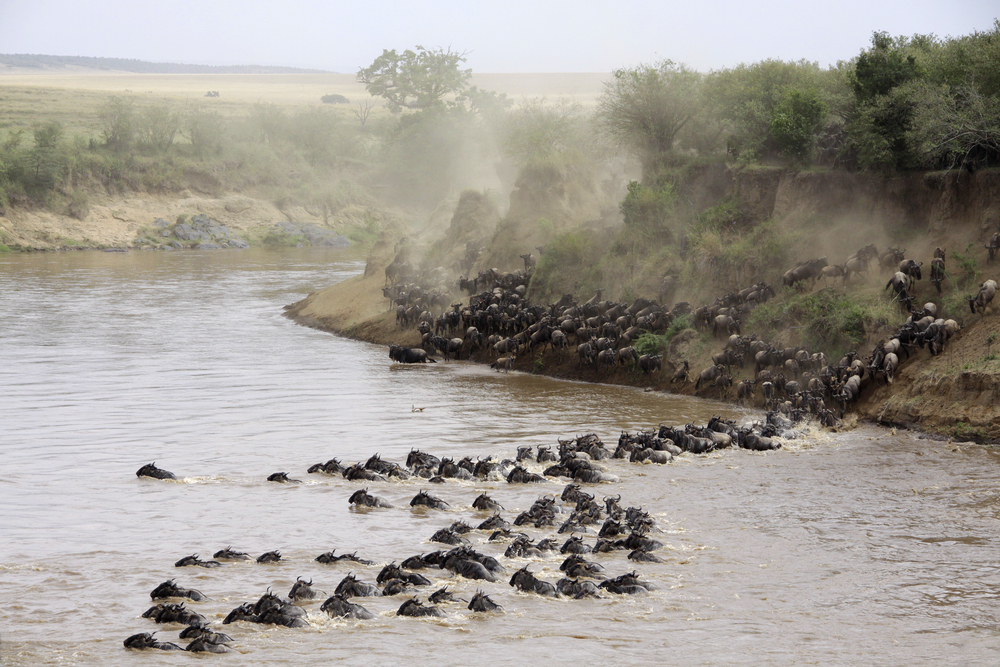
Since it was summer in the United States, it was Kenya’s winter in the southern hemisphere. The weather was perfect (not too hot, and it doesn’t get very cold there), and we were in the Masai Mara in the peak month for the Great Migration. We saw thousands and thousands of the smaller species mainly because the main mass of these animals had made it to the Masai Mara for the month as part of their circular migration from Kenya to Tanzania.
The animals complete this 1,200-mile circuit in pursuit of food and water, braving the treacherous Mara River where tens of thousands of wildebeests, Thompson’s gazelle and zebras fall prey to the hungry crocodiles in the river. Throughout the entire migration process, it is estimated that 200,000 – 250,000 wildebeests will die (many of them babies), and 20,000-50,000 zebra will perish. It is a dangerous journey for both adult and young alike, but with the promise of every animal’s number one goal: survival.
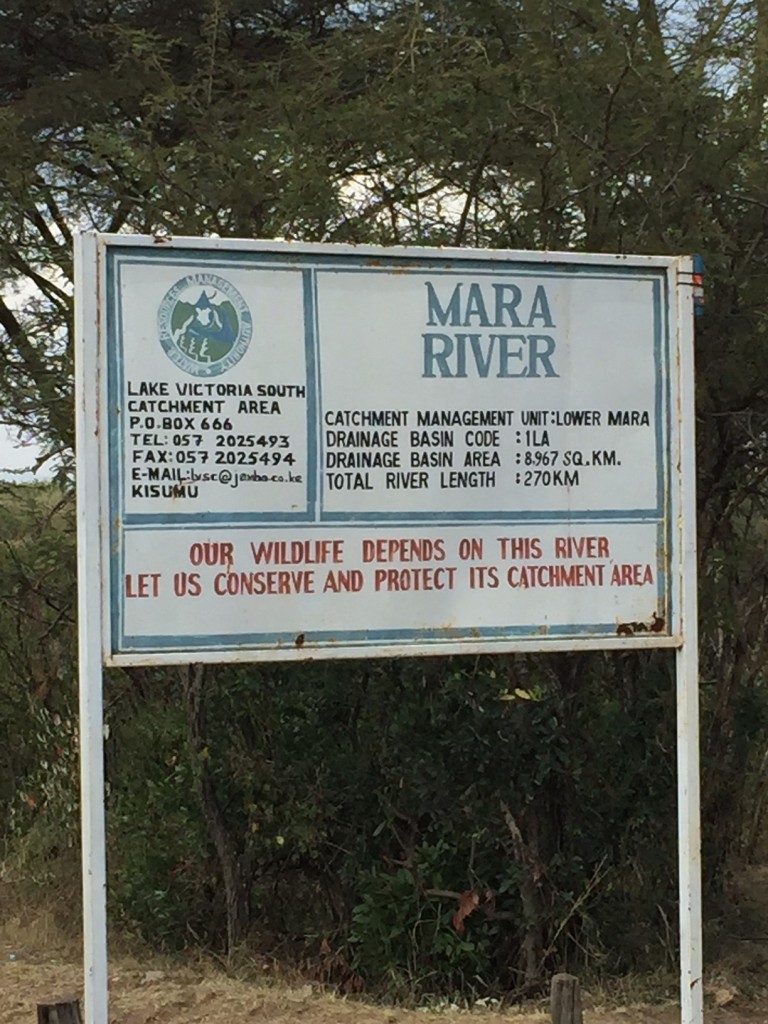
As our safari guide drove us around the park, we observed how skittish the smaller animals were. Impalas, gazelles, wildebeests, warthogs, zebras, and even hyenas were quite scared of these monster trucks rolling around their home. However, the elephants, giraffes and large cats couldn’t care less about us. When my family and I first saw our first herd of elephants, we were giddy to say the least.
Elephants have always been my favorite animal, their gentle nature and fierce love and loyalty were always so endearing to me. Seeing them in person was not just a dream come true, but an affirmation of what I knew to be true: elephants were the gentle giants I had learned about, and so much more. I could have sat all day watching them and have never gotten bored.
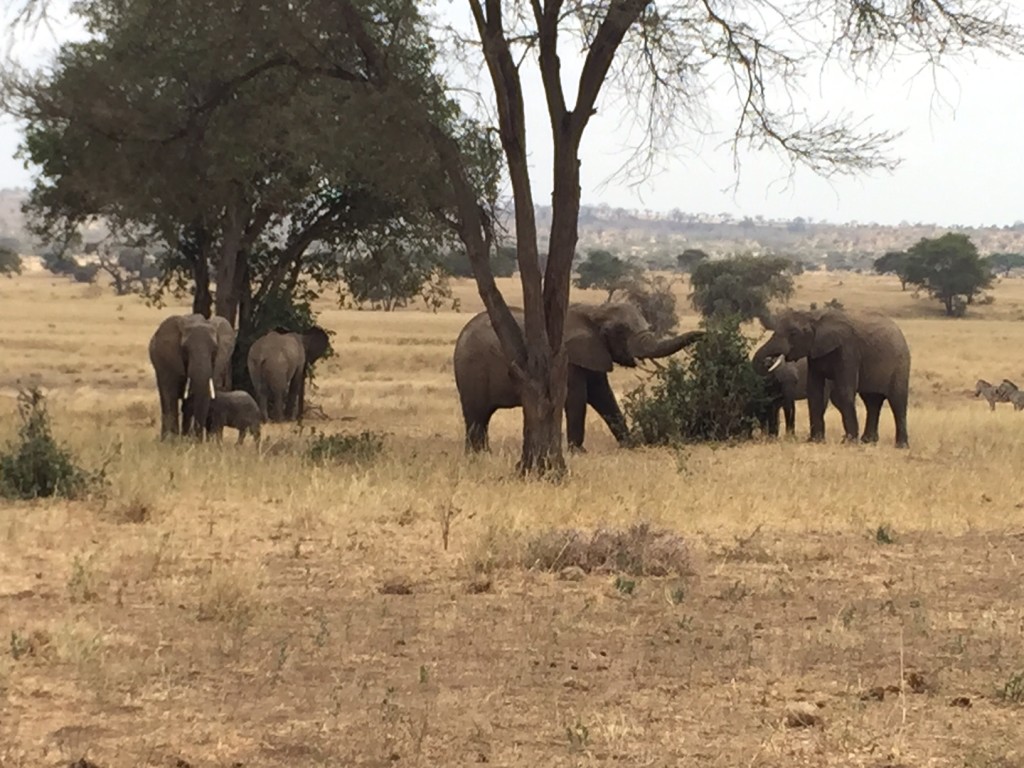
Whether or not it was a mating couple or a single lion sleeping in the shade to escape the midday sun, they had no regard for us. I came to the hypothesis that the larger animals must have considered us to be other large animals that meant no harm to them. Perhaps we resembled clunky, awkward-looking rhinos? Who knows.
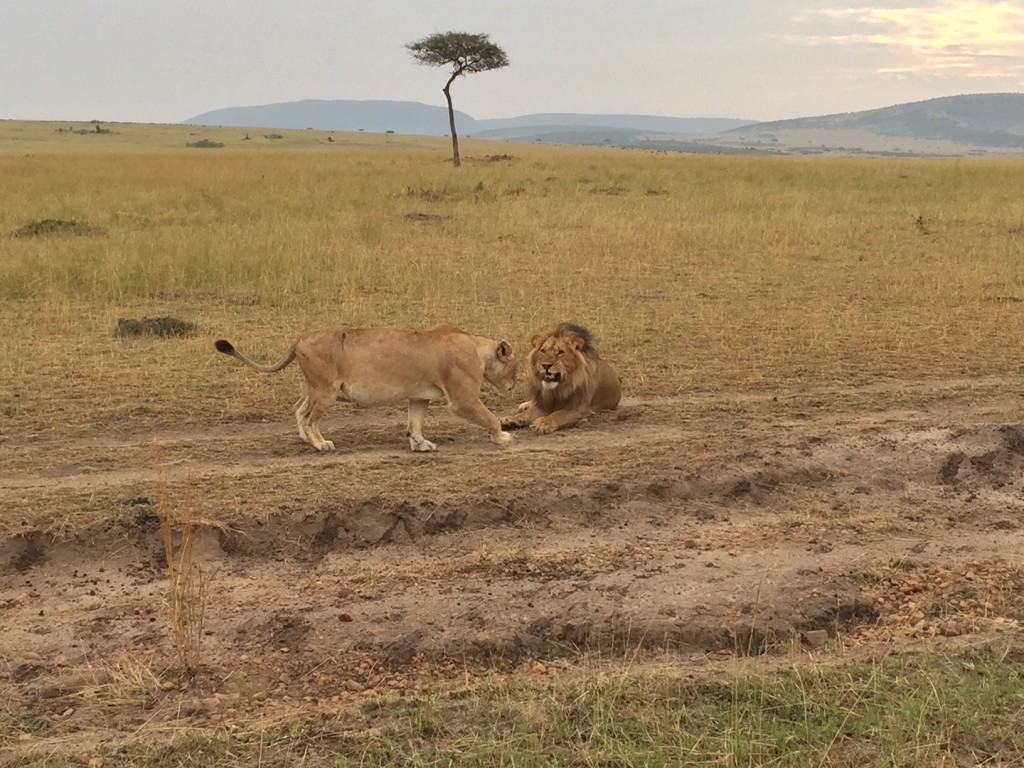
One of my favorite experiences on the safari was our sunrise morning. We got inside the Masai Mara park before the sun came up and were able to find a spot with a view of the grasslands as the sun peeked its way up above the background mountains. The vivid colors in the sky accompanied by the thousands of wildebeests and zebras surrounding our van was breathtaking. We stood in our van and watched the sun work its way into the sky and light up the plains as the animals grazed around us. It was one of the most peaceful moments in my entire life.
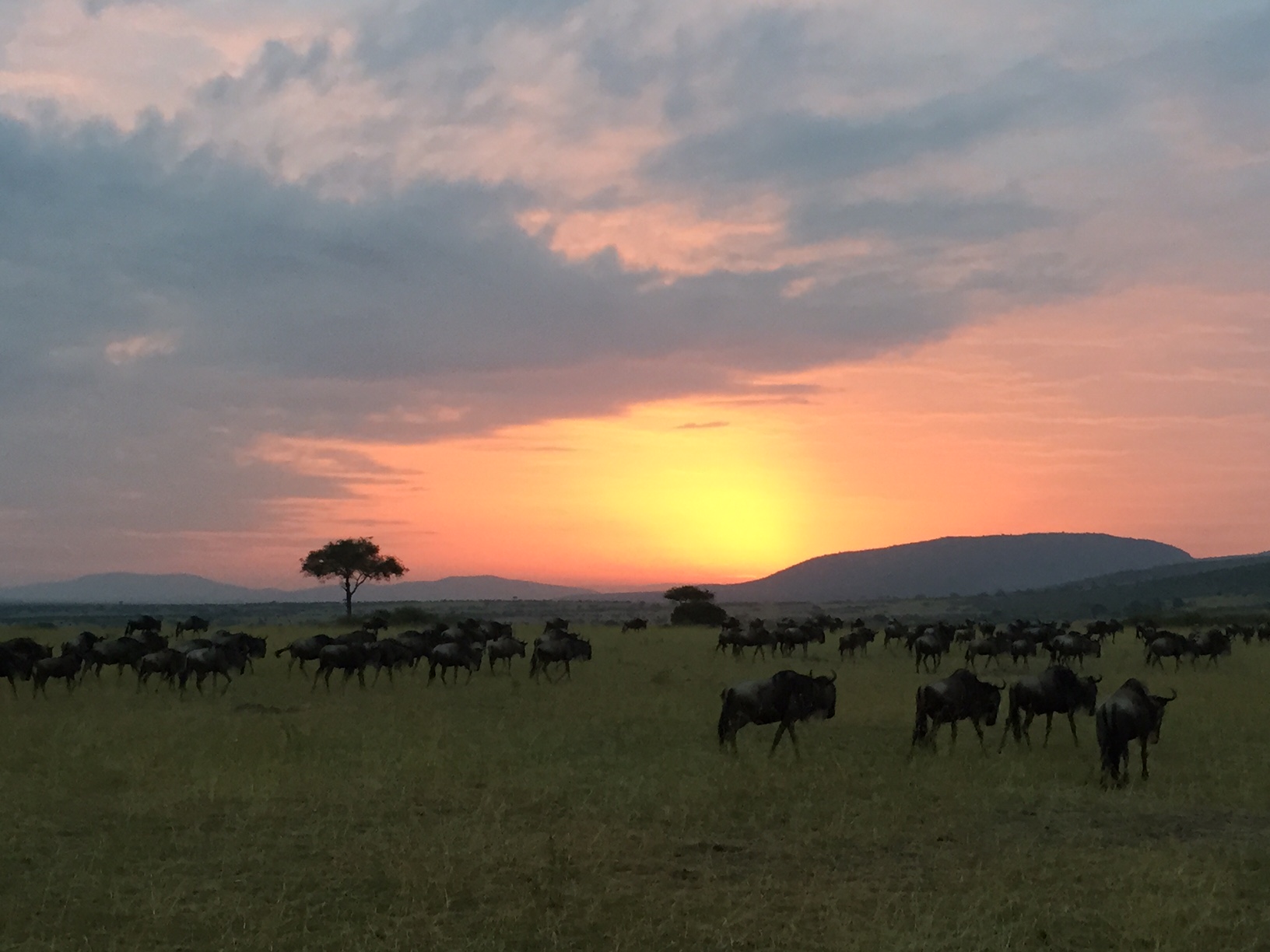
At the end of our safari adventure, we were set to return to the Masai village for more volunteer work. We had received hot showers on our safari, a more-than-welcome luxury after only one cold “bucket shower” in the village during the week prior. Having those hot showers on the safari really got me thinking about how much I take those kinds of luxuries for granted. A hot shower may be common place in a first world country, but often times hot water and the concept of an actual shower faucet is out of reach. This concept applies for far more than just hot water, but I won’t drone on.
The safari also showed me how truly brutal and beautiful nature is. These African animals from storybooks and movies were even more magnificent in person, and to develop an understanding of what they must do to survive was eye-opening. We witnessed two cheetahs eating their mid-morning lunch, well-aware that the young wildebeest they were sharing had lost its battle to this brutal circle-of-life.
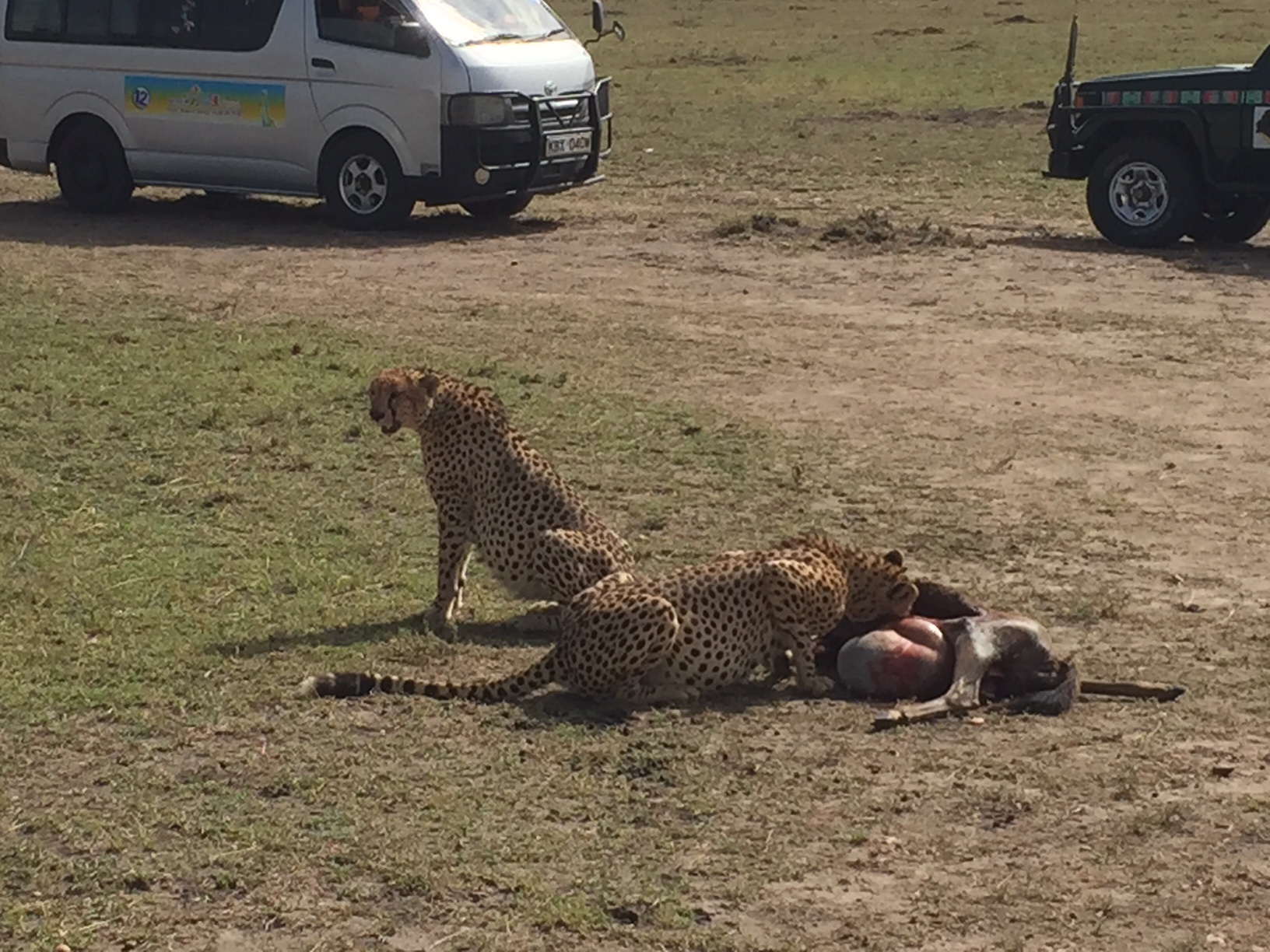
Another great lesson from the safari was patience. You cannot go on a safari and expect to everything that you may see in documentaries and films in a short period of time. You have to consistently search and wait because the animals don’t know or care if you’re looking for them. You also have to realize that you may not be able to see all of the animals, and definitely not in one day. However, I can guarantee that each and every moment of searching and waiting will be worth it 110%.
The fourth and final lesson from the safari was that we live on a beautiful planet with beautiful creatures, and we need to not only respect those animals’ lives, but also work to protect them. If we do not preserve this planet and it’s fragile ecosystems, these magnificent animals will cease to exist. Hundreds and sometimes thousands of species go extinct every day, but people only seem to notice when it’s the big, well-known animals such as tigers and elephants.
Being on this safari made me realize that humans have the potential to destroy everything that I found so beautiful. It is a scary concept, but we need to address it because the ‘concept’ is a reality for all of those species each day. And it has quickly become a reality for the animals in the Masai Mara. Poaching is more prevalent than ever, and rhinos & elephants are often the victims.
As I conclude my story, I urge people to take steps to protect their environments and be eco-conscious. If possible, go on a safari. It is not only exciting, adventurous, and life-changing, but it will also give you the perspectives that I have shared: don’t take basic “luxuries” for granted, respect nature, be patient, and protect the earth. We only have one planet, so let’s work together collectively to save it and all the animals that live on it alongside us.
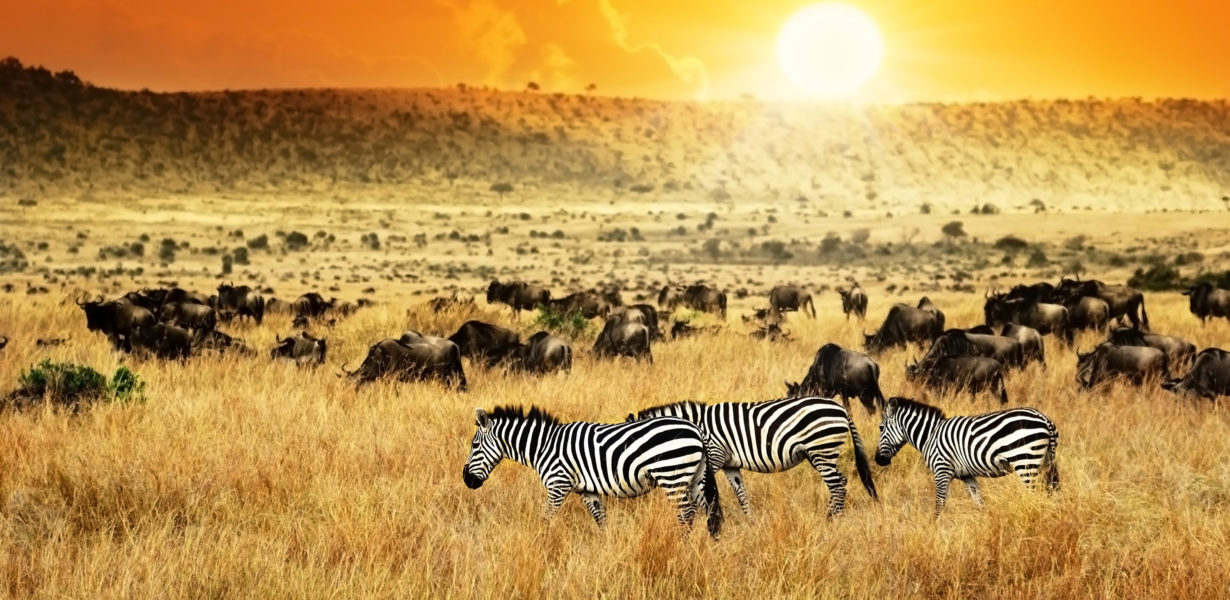





Your safari experience was nice. Masai Mara is always among the top destinations in Africa.